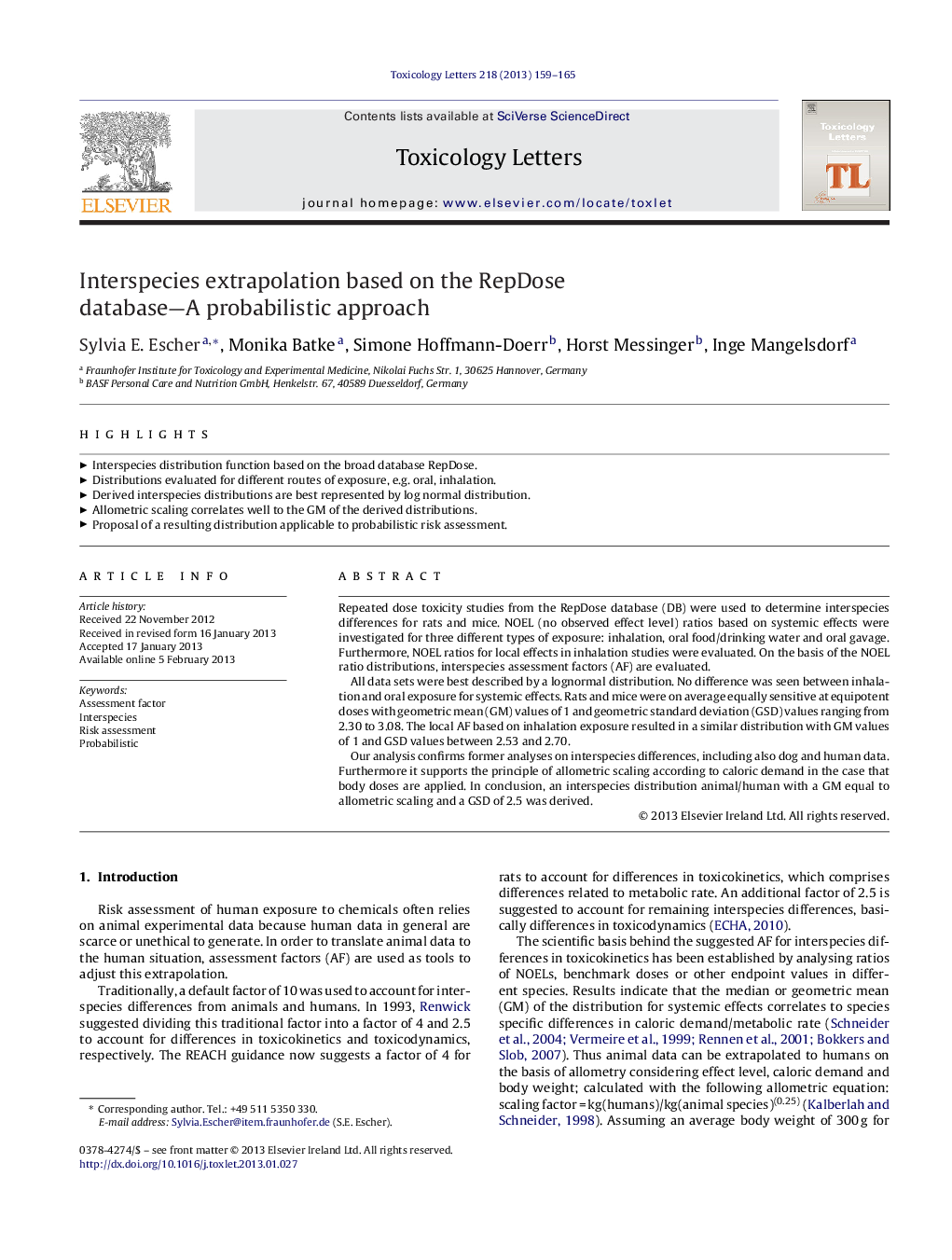| Article ID | Journal | Published Year | Pages | File Type |
|---|---|---|---|---|
| 2599346 | Toxicology Letters | 2013 | 7 Pages |
Repeated dose toxicity studies from the RepDose database (DB) were used to determine interspecies differences for rats and mice. NOEL (no observed effect level) ratios based on systemic effects were investigated for three different types of exposure: inhalation, oral food/drinking water and oral gavage. Furthermore, NOEL ratios for local effects in inhalation studies were evaluated. On the basis of the NOEL ratio distributions, interspecies assessment factors (AF) are evaluated.All data sets were best described by a lognormal distribution. No difference was seen between inhalation and oral exposure for systemic effects. Rats and mice were on average equally sensitive at equipotent doses with geometric mean (GM) values of 1 and geometric standard deviation (GSD) values ranging from 2.30 to 3.08. The local AF based on inhalation exposure resulted in a similar distribution with GM values of 1 and GSD values between 2.53 and 2.70.Our analysis confirms former analyses on interspecies differences, including also dog and human data. Furthermore it supports the principle of allometric scaling according to caloric demand in the case that body doses are applied. In conclusion, an interspecies distribution animal/human with a GM equal to allometric scaling and a GSD of 2.5 was derived.
► Interspecies distribution function based on the broad database RepDose. ► Distributions evaluated for different routes of exposure, e.g. oral, inhalation. ► Derived interspecies distributions are best represented by log normal distribution. ► Allometric scaling correlates well to the GM of the derived distributions. ► Proposal of a resulting distribution applicable to probabilistic risk assessment.
